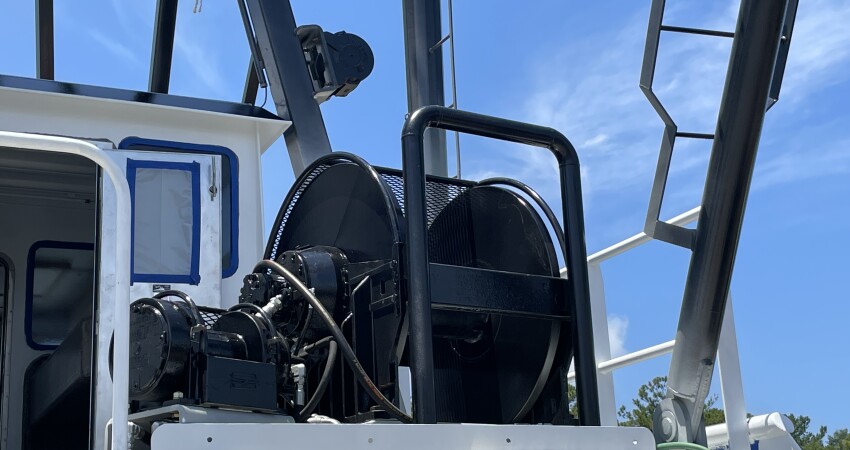Pullmaster winches can be found on commercial fishing vessels all around the U.S., Canada, and Mexico and are exported to several other countries. “We’ve got winches in Australia, Korea, and others,” says Edward Schultz, Pullmaster’s distribution sales manager, north region.
Schultz started with Pullmaster at age 19 and has been with the company for 36 years. He notes that three European machinists started the company in Surrey, British Columbia in the late 1960s. “It was a jobber shop building gears for other companies,” says Schultz. “They looked around and saw and opportunity and started building winches. Once they beefed up the winches, they were on 95 percent of North American fishing vessels.”
True enough, it’s almost impossible to find a trawler, shrimper, or scallop vessel without a Pullmaster somewhere on board. “Our smaller winches are popular,” says Schultz. “Those are the PLs, the planetary winches, and the M series equal pull winches. But we’re also seeing vessels using our H series, rapid reverse winches for their main winches. These will let wire out 4.3 times faster than they haul it in. The H30 is our biggest.”
Schultz calls the Pullmaster the Cadillac of winches. “They’re not the cheapest,” he says. “But when you’re offshore, you want to know your winch is going to work.”
Pullmaster dependability is an accepted fact in the commercial fishing industry. “We have people contacting us with problems with winches they bought in the 1980s,” says Mark Siebert, marketing director at Tulsa Winch Group (TWG), which bought Pullmaster in 2000. Kirk Nicolaison, distribution sales manager, south region, reports winches sold in the 70s coming back in for service.
“We have a great distribution network,” says Siebert. “And our distributors are trained to do all our service work. All our winches are sold with a two-year limited warranty.”
Schultz adds that at Pullmaster, safety is the number one consideration. “All our winches have failsafe brake systems. If there is no hydraulic fluid flowing through the valve, the brake is on.”
The Pullmaster team attributes the safety, quality, and robustness of their winches to top-grade materials and superior engineering. Schultz points out that the strength of the primary and secondary gears on Pullmaster winches is unmatched in the industry. “The engineering on the winches was done by a guy named Denash Kaushal,” he says. “He just retired after 48 years. He designed all our winches. We owe a lot to him.” While noting that Pullmaster trains most of its Surrey workforce in-house, when asked what he learned over the years from Kaushal, Schultz says: “I learned how to say 'Yes, sir.'”
With Kaushal retried, Pullmaster is, nonetheless, pushing its designs forward. “The next thing is electric,” says Schultz. “We plan to be a leader in that.”
Besides owing a debt to Kaushal, the Pullmaster team adds that it owes a debt to all the company’s loyal customers. “We want to thank them for believing in us,” says Schultz.







